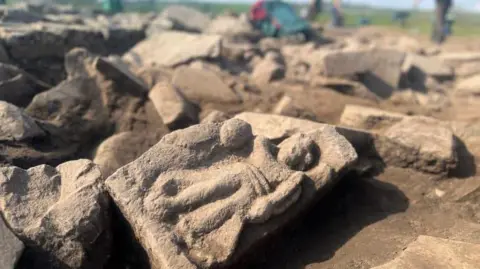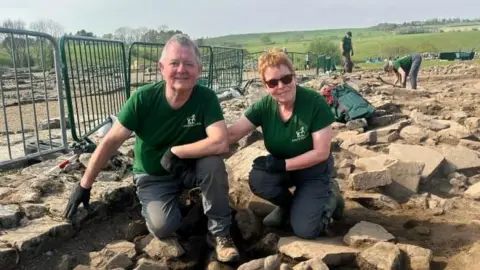Victory goddess sandstone carving found in rubble
 The Vindolanda Trust
The Vindolanda TrustA sandstone carving, believed to be a representation of the Roman goddess of victory, has been discovered near Hadrian's Wall.
It was uncovered by volunteers in a reused pile of rubble above infantry barracks at the Vindolanda Roman settlement in Hexham, Northumberland.
Victory, known in Latin as Victoria, was revered by the ancient Romans during times of war and was often credited for battlefield success.
Jim and Dilys Quinlan, from Merseyside, were in their 21st year of volunteering at the site when they made the discovery.
Excavation work is carried out annually at the Roman site and the couple found the artefact on 1 May.
Dr Andrew Birley, director of excavations for the Vindolanda Trust, said it was a "reward for their 21 years of hard work and dedication".
 The Vindolanda Trust
The Vindolanda TrustThe stone is thought to be one side of a much larger relief which would have framed an inscription in its centre.
It would have represented the end of Severan wars and the establishment of the fort at the site in the 3rd Century, Vindolanda said.
Dr Birley said symbolism would have been a vital part of the culture for the soldiers there almost 2,000 years ago.
The trust's curator, Barbara Birley, said it was "highly likely" the stone would have been brightly painted.
The team will work with specialists to see if any traces of the pigment remain.
"For now, the relief is being stored unwashed ready for that further analysis," Ms Birley said.
The carving is set to go on public display in early 2026 at the Vindolanda museum.
